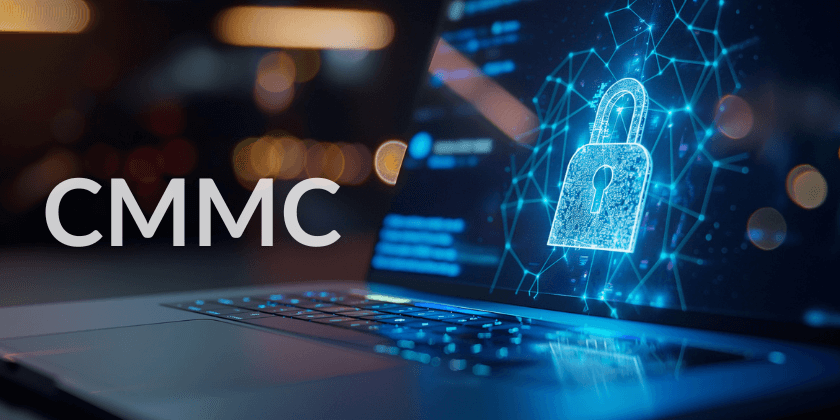In the digital age, where cyber threats loom large, and the stakes of information security have never been higher, the defense sector faces unique vulnerabilities. To address these challenges, the Department of Defense (DoD) has introduced the Cybersecurity Maturity Model Certification (CMMC), a framework designed to fortify the cybersecurity defenses of the Defense Industrial Base (DIB).
CMMC stands as a comprehensive certification process that ensures defense contractors have the necessary controls to safeguard sensitive data. This initiative marks a significant shift towards a more secure and resilient defense supply chain, aiming to protect against the ever-evolving landscape of cyber threats.
The Importance of CMMC
Implementing CMMC is not just a procedural change but a critical evolution in defense cybersecurity practices. It underscores the growing recognition that the security of the United States and its allies hinges not only on the strength of their militaries but also on the resilience of their supply chains against cyber espionage and sabotage.
CMMC is vital for businesses as it not only protects national security but also secures proprietary information and intellectual property against cyber adversaries.
CMMC Levels Explained
Cybersecurity Maturity Model Certification (CMMC) categorizes the cybersecurity readiness of defense contractors into five levels, each with a set of practices and processes designed to enhance the protection of Controlled Unclassified Information (CUI) and Federal Contract Information (FCI). Understanding these levels is crucial for organizations aiming to work with the Department of Defense (DoD).
Level 1: Basic Cyber Hygiene
- Focus: Protecting FCI through basic safeguarding requirements.
- Requirements: Implement basic cybersecurity practices, such as using antivirus software and changing passwords regularly.
Level 2: Intermediate Cyber Hygiene
- Focus: Transition step towards protecting CUI.
- Requirements: Document practices and policies to guide the protection of CUI and implement intermediate cybersecurity practices.
Level 3: Good Cyber Hygiene
- Focus: Protecting CUI with comprehensive security measures.
- Requirements: Establish, maintain, and resource a plan demonstrating the management of activities for practice implementation. This level includes all NIST SP 800-171 rev1 security requirements.
Level 4: Proactive
- Focus: Protection against advanced persistent threats (APTs) with advanced cybersecurity practices.
- Requirements: Implement proactive cybersecurity practices to detect and respond to advanced threats. This involves a thorough understanding of the tactics, techniques, and procedures used by APTs.
Level 5: Advanced/Progressive
- Focus: Optimizing cybersecurity processes.
- Requirements: Establish, maintain, and resource a plan demonstrating the management of activities for advanced practice implementation. This level focuses on protecting CUI from APTs through sophisticated cybersecurity practices and processes.
Each level builds upon the cybersecurity practices of the previous one, requiring organizations to develop more sophisticated cybersecurity capabilities as they progress. Achieving a higher CMMC level signifies a greater commitment to cybersecurity and the ability to protect sensitive government data against a wider range of cyber threats.
Organizations must identify the appropriate level required for their contracts with the DoD and work towards meeting those standards to ensure eligibility for contract awards.
Who Needs CMMC Certification?
CMMC certification is mandated for all defense contractors that handle CUI. This includes prime contractors and their subcontractors, necessitating a wide swath of the DIB to undergo assessments and obtain certification.
Organizations must achieve the CMMC level required by the contracts they wish to bid on or retain, making certification essential for continued partnership with the DoD.
Preparing for CMMC Certification
Preparing for Cybersecurity Maturity Model Certification (CMMC) involves strategic steps to align your organization’s cybersecurity measures with the Department of Defense (DoD) requirements. Here’s a streamlined approach:
Understand the CMMC Level Requirements
- Identify the specific CMMC level necessary for your organization based on the contracts you aim to secure or maintain with the Department of Defense (DoD). Each level corresponds to a set of practices and processes that range from basic to advanced cybersecurity measures.
- Review the specific security controls and requirements for the targeted CMMC level to fully understand what is expected.
Conduct a Gap Analysis
- Perform a thorough assessment of your current cybersecurity posture compared to the CMMC requirements for your desired level. This gap analysis should cover all areas of your IT infrastructure, policies, and procedures.
- Identify areas where your organization falls short of the required security measures and prioritize these gaps based on their criticality and the resources required to address them.
Develop and Implement a Remediation Plan
- For each identified gap, develop a remediation plan that outlines the steps needed to achieve compliance. This may involve updating policies, implementing new security technologies, or enhancing employee training programs.
- Allocate resources (budget, personnel, and time) to execute the remediation plan effectively. Consider the need for external expertise or solutions that can expedite compliance.
Enhance Employee Awareness and Training
- CMMC places a strong emphasis on the human element of cybersecurity. Train employees on their role in maintaining cybersecurity hygiene and the specific practices relevant to your CMMC level.
- Implement an ongoing training program to keep staff updated on new threats and compliance requirements.
Document Policies and Procedures
- Clearly document all cybersecurity policies and procedures. This documentation is crucial not only for CMMC assessment but also for maintaining cybersecurity practices.
- Ensure that policies are accessible and understood by all employees and that procedures are followed consistently.
Engage with a CMMC Third-Party Assessor Organization (C3PAO)
- Early in the preparation process, identify a suitable C3PAO to conduct your certification assessment. Engaging with a C3PAO can provide insights into the assessment process and help identify additional preparation needs.
- Consider a pre-assessment or consultation with the C3PAO if available. This can provide valuable feedback and identify areas needing improvement before the formal assessment.
Continuously Monitor and Improve Cybersecurity Practices
- CMMC certification is not a one-time effort but a continuous commitment to cybersecurity excellence. Implement mechanisms for ongoing monitoring and improvement of cybersecurity practices.
- Stay informed about updates to the CMMC framework and adjust your cybersecurity practices accordingly to maintain compliance.
Leverage Technology and Tools
- Utilize cybersecurity tools and technologies that can automate compliance processes and enhance security measures. Solutions like Security Compass’s SD Elements can help organizations automate threat modeling, security requirements, and compliance processes, significantly easing the burden of CMMC preparation.
Conclusion
The introduction of the Cybersecurity Maturity Model Certification represents a paradigm shift in the defense sector’s approach to cybersecurity. As the threat landscape continues to evolve, the importance of comprehensive cybersecurity measures cannot be overstated.
CMMC not only enhances the cybersecurity posture of individual organizations but also strengthens the collective defense of national and allied interests. Initiating the journey toward CMMC certification is a strategic investment in the future security and success of defense contractors.
How SD Elements Supports CMMC Compliance
Security Compass’s SD Elements offers a solution that simplifies the journey towards CMMC compliance. Through automated threat modeling and the integration of secure coding practices, SD Elements enables organizations to embed security and compliance into their software development lifecycle.
By providing clear guidance and actionable tasks, SD Elements helps ensure that software meets the stringent security requirements of the DoD, facilitating a smoother path to CMMC certification. Contact us to learn more today!

